

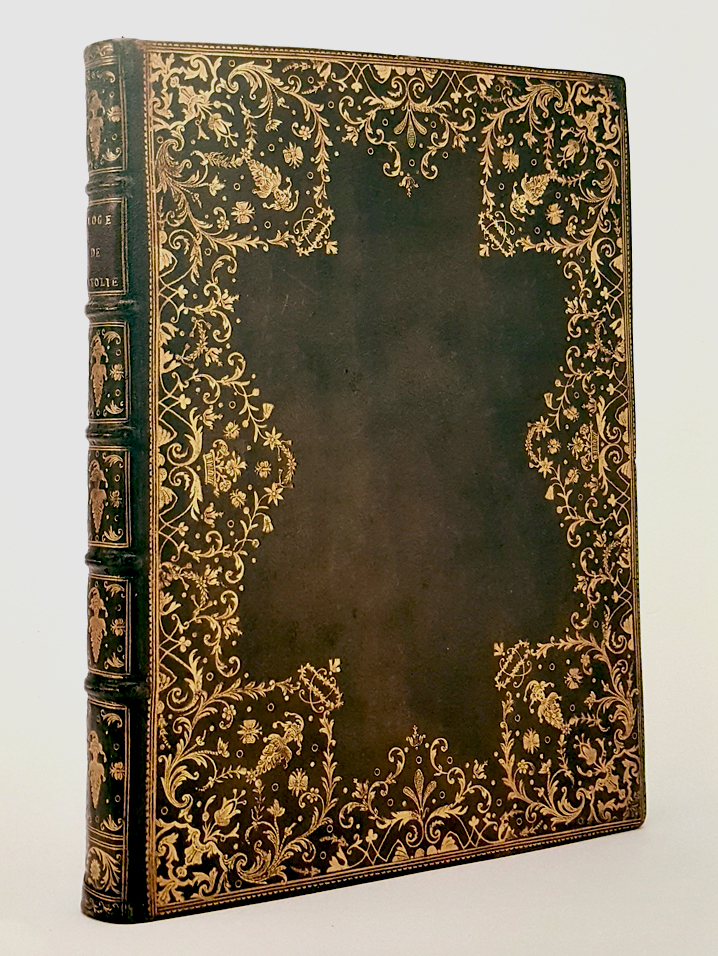
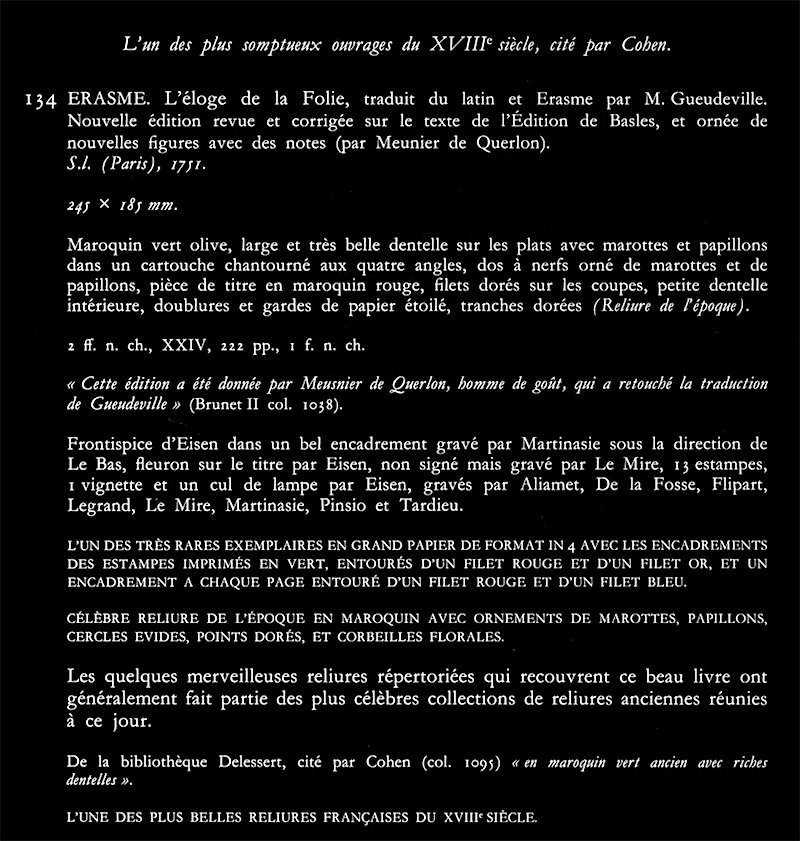
| The reproduction shown above is from the catalogue Deux Cents Livres Precieux de 1467 - 1959 by Patrick et Elisabeth Sourget, 1985, one of their first catalogues. When I saw this binding I knew I would have to change my Plumet theories, here was more than I bargained for. Even though this is a good photo and printed at nearly full size the angle of the binding meant trying to undistort the perspective angle to try to extract imprints, never really a good way to do things. I decided to go to a black and white format, to see if that would improve the detail. |
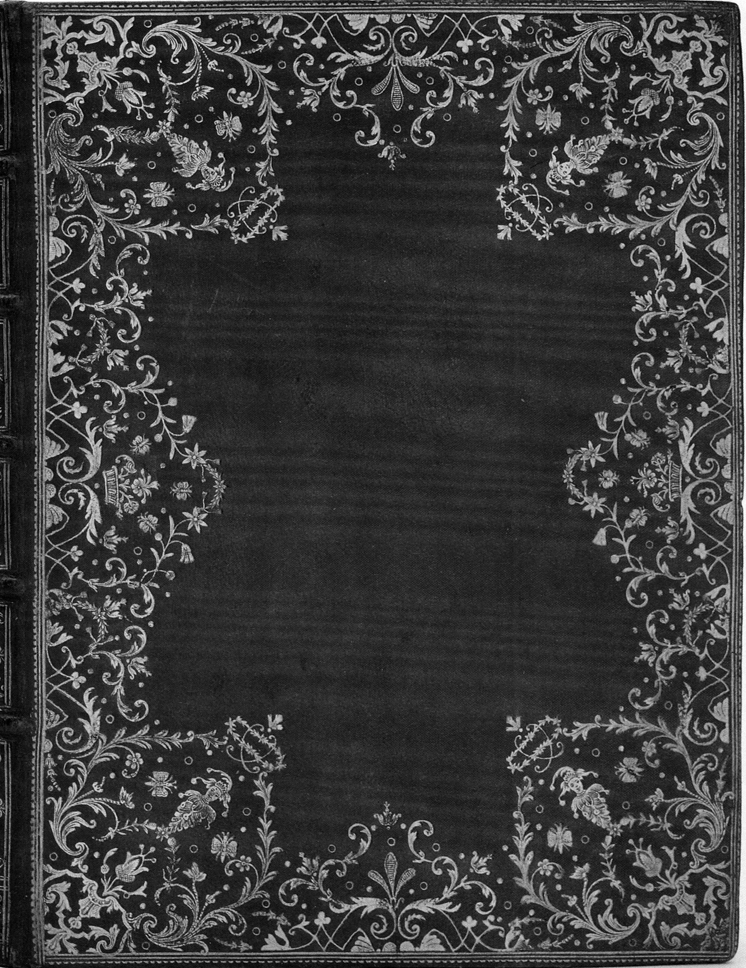
| The reproduction shown above is the 134 cover without color and the perspective distortion removed. |
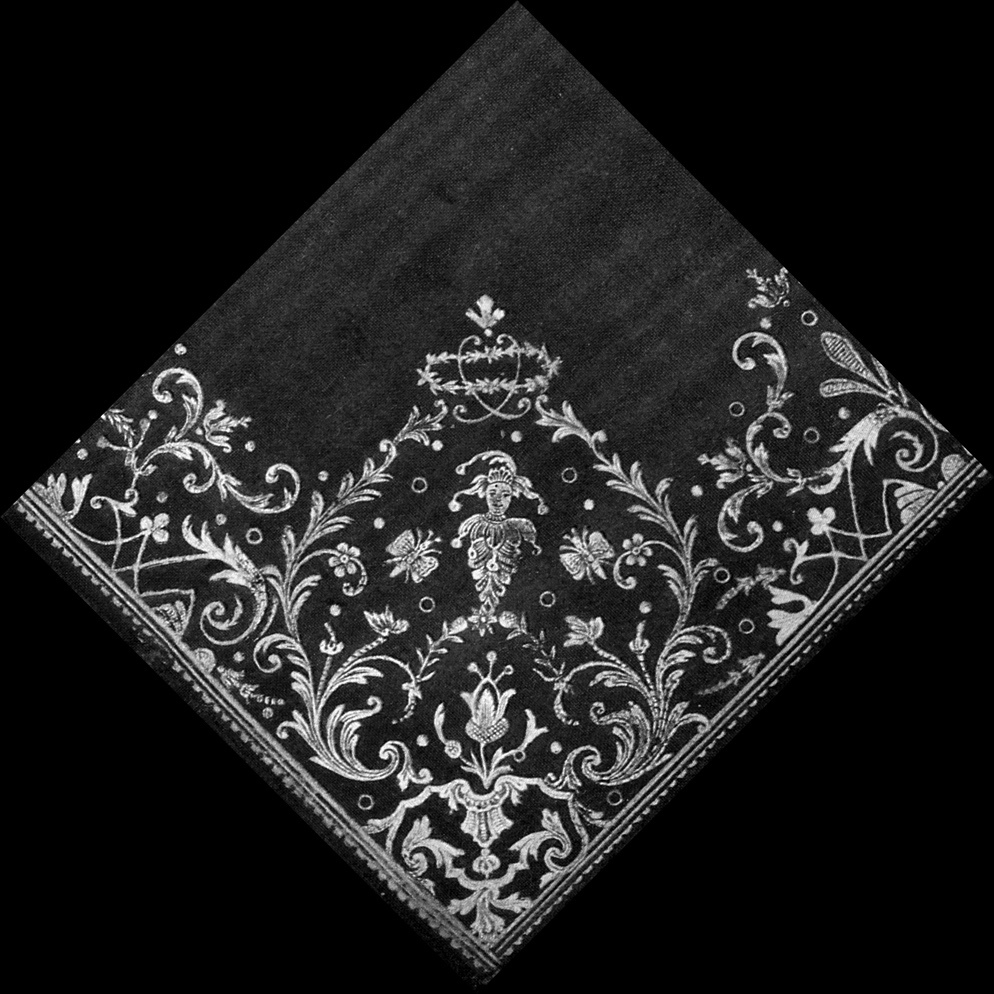
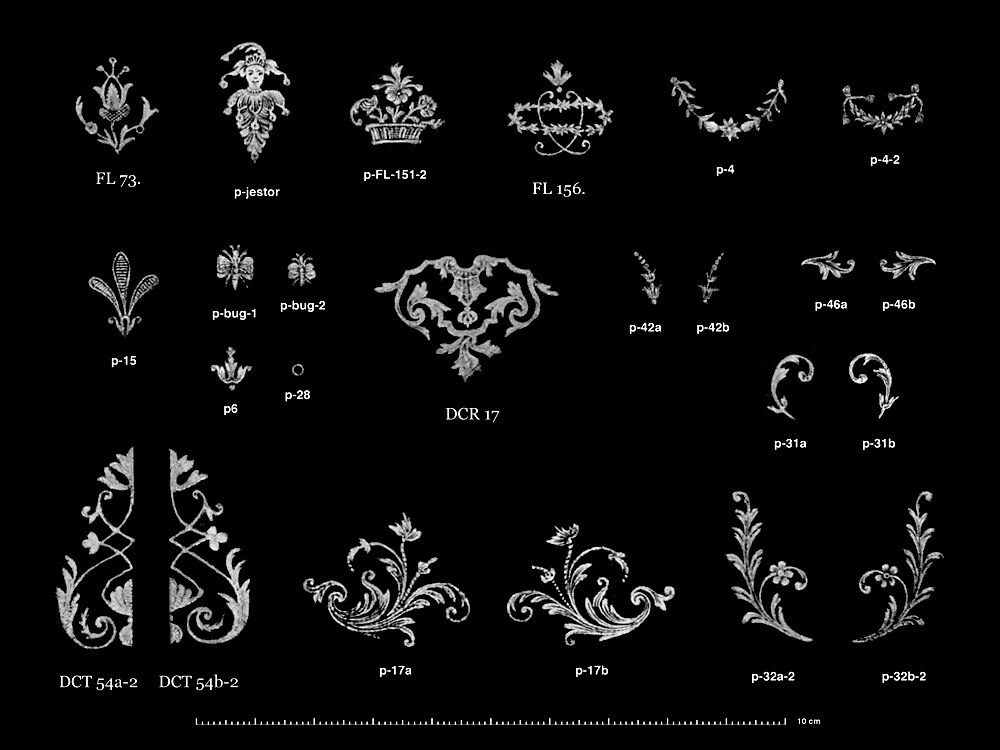
|
In Comparative Diagram 1, I have extracted the imprints from the approximately corrected front board of the 134 binding, These will serve as provisional examples until we can get an actual scan of the cover, lets not hold our breath for that. We see here some of the same imprints that we saw on thee previous binding No. 77, of particular interest is the corner tool, Barber's DCR 17 that we have found on many of the plumet bindings. Normally a binder might use the same corner tool for a prolonged period, however we might also speculate that most of these bindings were possibly made around the same period, and that could be somewhere near the printing date of this Erasme translation 1751. Barber notes the imprint FL 156. as being found on a Fetil signed binding... |
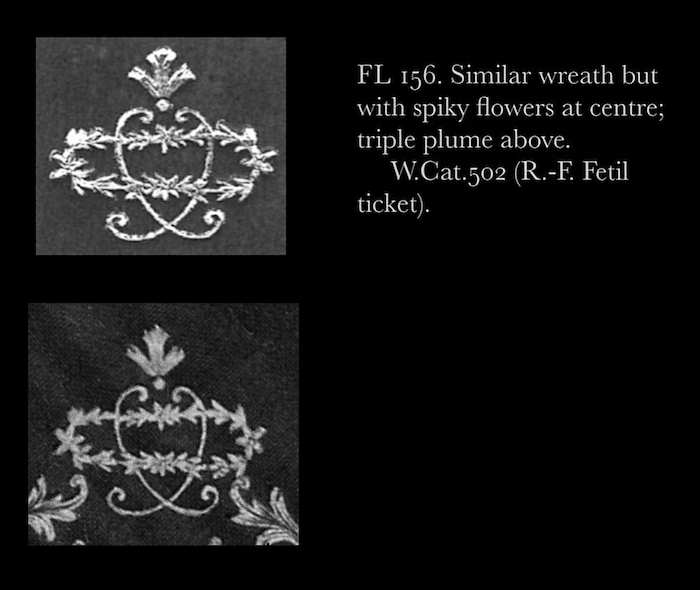
| ...in Comparative Diagram 2, I show Barber's FL 156 type model compared with an imprint from this No. 134 Erasme, click to see an enlargement, an overlay is not required, here we can easily see that these imprints derive from the same tool. This same imprint is found on Louis Douceur's mosaic binding for Madame de Pompadour (click here to see it), this binding could not have been made before 1755 but may have been made a few years after that date... possibly in 1759 as the style of the imprints suggests, being much closer to the style of the W.Cat.361. binding that we looked at on page 4 this binding dates to 1765 and was probably executed by Fetil. What am I getting at here... only to show that Fetil was using this tool around and after 1760 and that it being found here in a Plumet binding could suggest an older date of execution. These tools show up in Fetil bindings from around 1757.... this may indicate that this Plumet is also from around that date. |
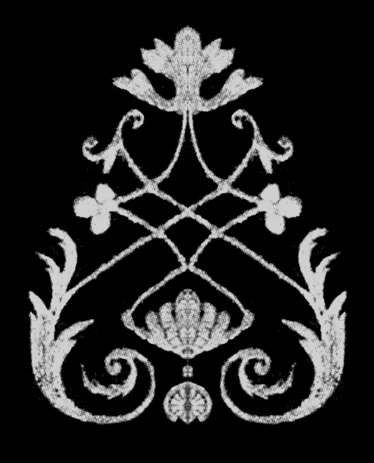
| In Comparative Diagram 3, I show what I suspect was the original intention of the creator of this pair of tools, these tools were specifically made to be placed back to back and form, the motif as I show it above. This is not my brainwave, I happened to see (a long time ago, I wish I could remember where) these tools used in this fashion, and not as they are seen in Plumet or Douceur applications where they are used separately along the sides. These tools were meant to be in the central part of the decoration. Now when you see, that the Plumet models (that are not exactly the same as the Doucer models), are not identical mirrored pairs, so that if you placed them together back to back they would not matchup very well and would not be symmetrical, this suggests that who ever made these tools copied an older model, yet was not aware of the importance that each should be identical. Further to this the correct usage of this tool seems to have been lost with Douceur and Plumet. I have created the perfected model above by mirroring one side. |
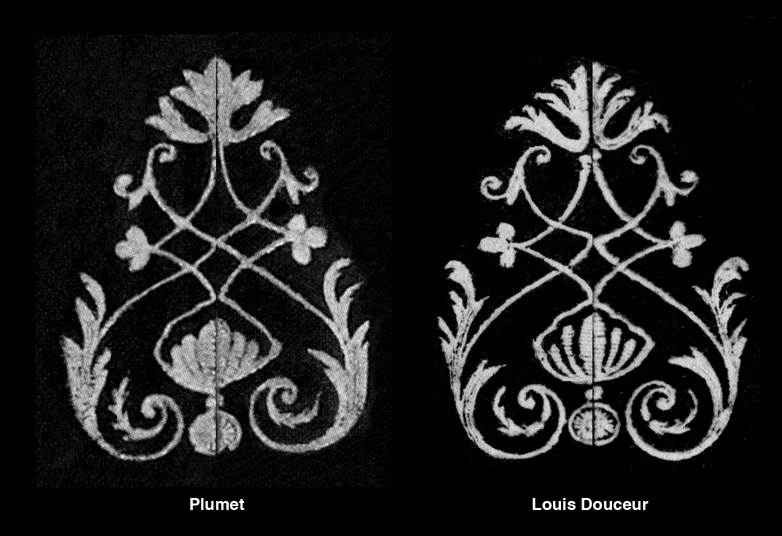
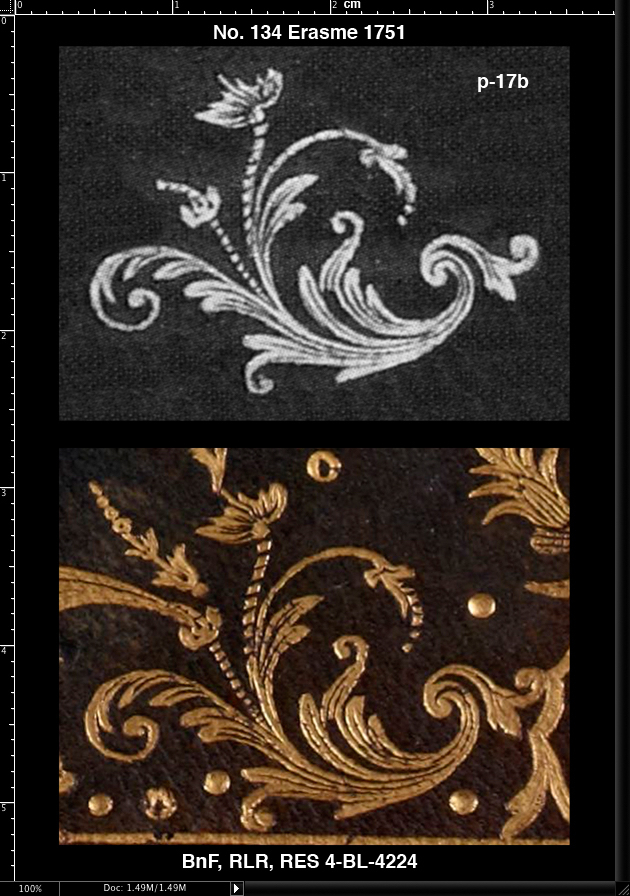
| In Comparative Diagram 5, I think I see what Philippa Marks calls "our life's work" here we get really lucky and find an identical imprint on the BnF binding that we studied on page 3 Les Amours pastorales de Daphnis et Chloé [de Longus, traduites par J. Amyot.] 1745. Here we have a precise example of this Plumet imprint p-17b, it can be measured and compared with confidence, the approximate 134 specimen turns out to be a bit short. Now we can, I think, be fairly certain that the BnF binding is indeed a Plumet. |
|
click here to return to the HOME page. click here to see an INDEX of the 2017 pages. see below links to previous work |
| Even experts are sometimes wrong, before you spend thousands on a book, please do your own research! Just because I say a certain binding can be attributed to le Maitre isn't any kind of guarantee, don't take my word for it, go a step further and get your own proof. In these pages I have provided you with a way of doing just that. |
| Virtual Bookings, created by L. A. Miller | return to the Home page of VIRTUAL BOOKBINDINGS |